This add-on is deprecated since Nuxeo Platform 6.0.
Navigation in DAM is based on search and filters. By default, all the assets of the folders you can access (i.e. in which you have at least Read rights) are displayed. The principle is to narrow down the search results and so the assets displayed.
The DAM tab provides access to all the domains of the platform, that is to say Default domain and the Asset library by default. Note that it only displays assets from these domains, so only files, pictures and videos. Notes, for instance, are displayed in the DAM UI.
The search available is a full text search. Assets are indexed using their title, description, content (+ attached files), and metadata. You can also use filters. The available filter criteria are:
- Tags: user keywords on the asset;
- Creation date: the date at which the asset was imported;
- Authoring date: the date at which the assets were created (different from the date at which they are imported).
- Author: the user who imported the asset;
- Original author: the person who produced the asset. The author is not necessarily a Nuxeo user;
- Collection: the collection(s) the assets are into;
- Subject: the topics assigned to the assets;
- Coverage: the geographic reach of the assets;
- Folder: the space(s) you want to restrict the search to.
Finding Assets Using Keywords
Full text search uses stemming. The Stemming search option will return the assets containing words that have the same stem as the word you entered into the "Keywords" field.
If you enter the world "Reading", you will find the assets containing in their text metadata "Read", "reads" etc. This is not the same thing as a search with a wildcard like *.
For more details on Search in the Nuxeo Platform, read the Searching the Nuxeo Platform page in the Document Management chapter of this guide.
The following example shows all the assets, both in the Default domain and the Asset library. There are 10 pages of results, sorted by creation date.
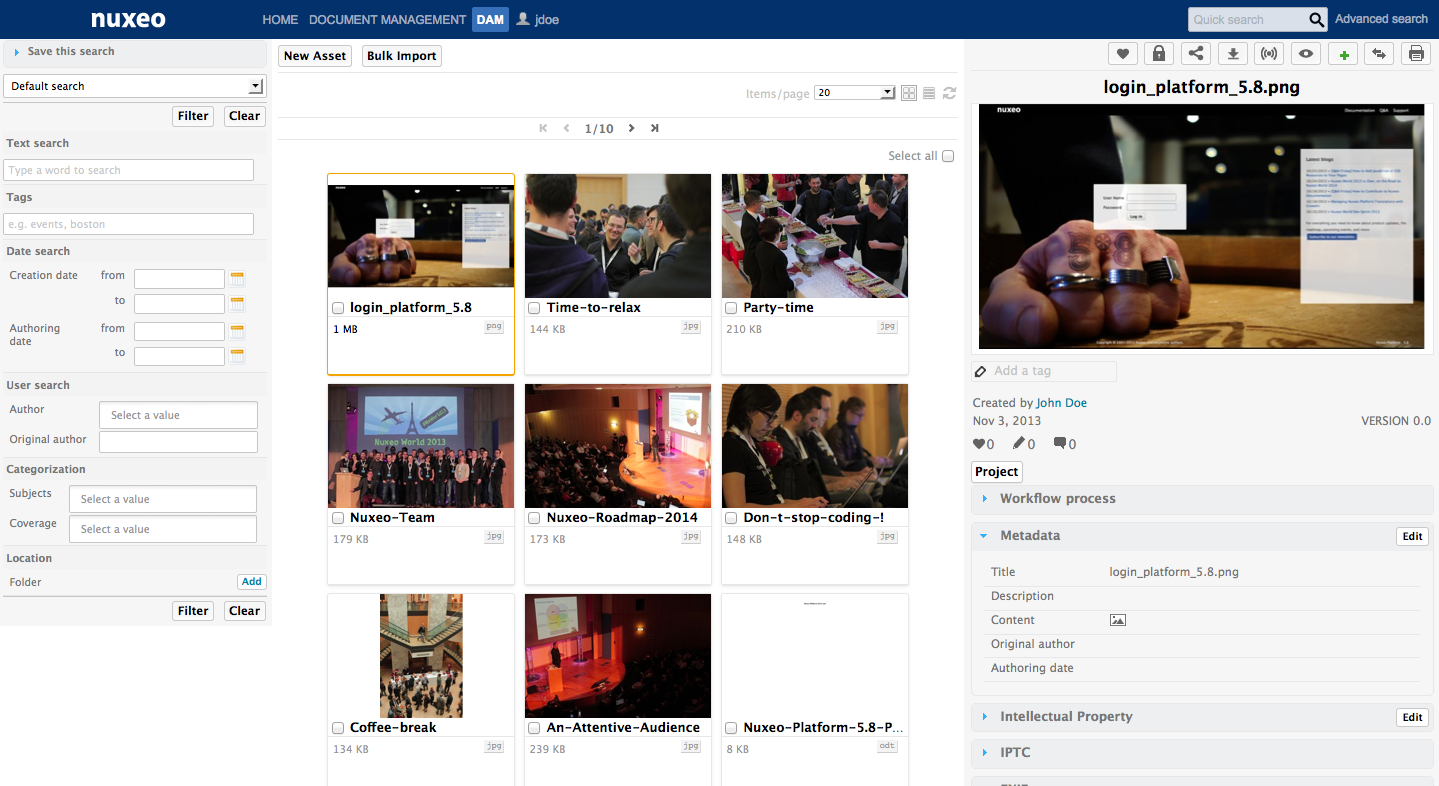

On the search pane, in the "Keywords" text area, enter the search term "blue".
The results will be the assets containing the word "blue", "BLUE", "BlUe" or any other combination of uppercase and lowercase letters: This search is not case sensitive. The search results will be filtered and will show only the digital files in which the word "blue" can be found:
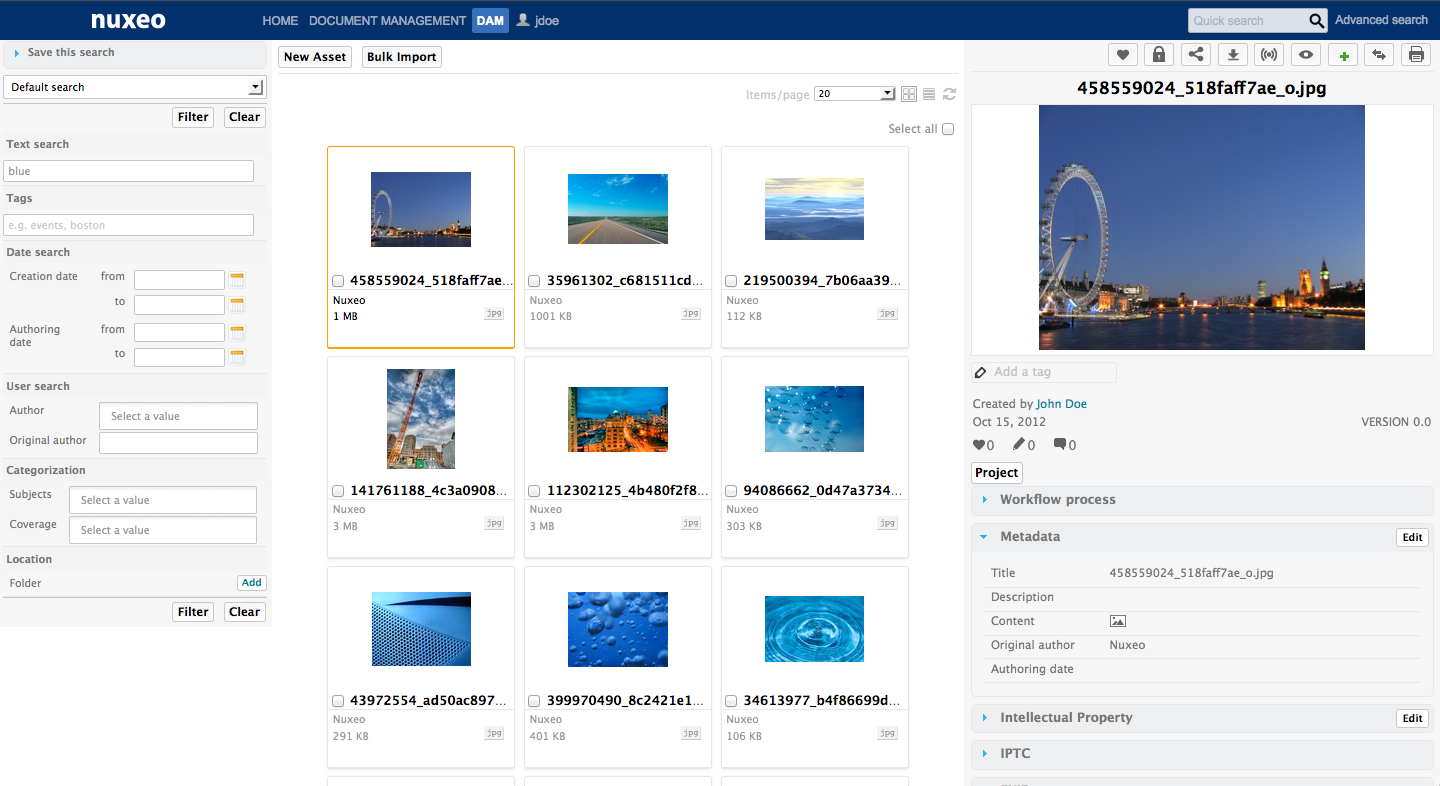

Add a word in the "Keyword" full text search field, "water" for example. You will find all the assets containing in their text metadata, both "blue" AND "water", but not necessarily in that order. This will probably narrow down the search results.
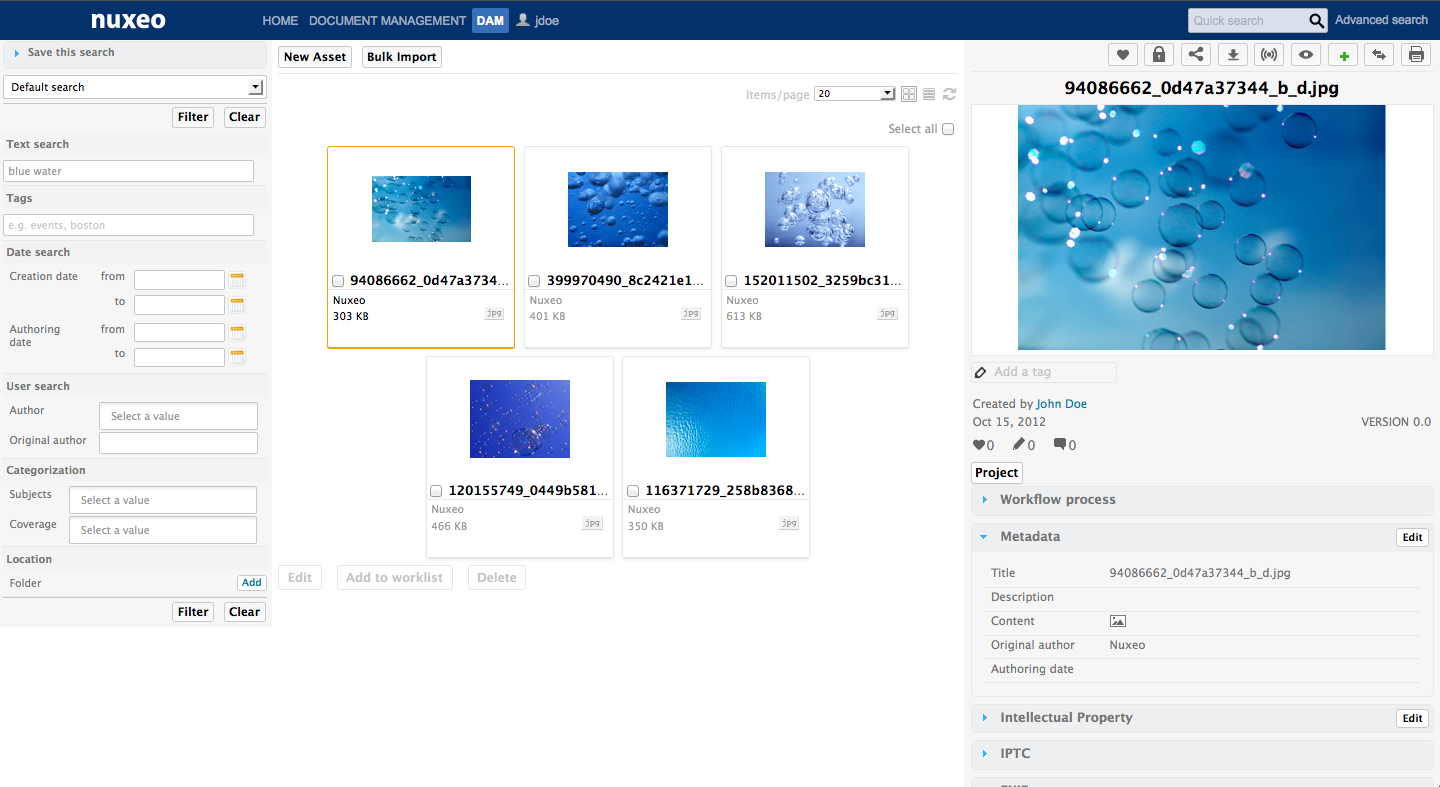

Finding Assets Using Metadata Filters
To refine your search, you can use following metadata of the assets: Coverage, Subjects, Authoring date. Select one or more of these criteria to narrow down the assets displayed.
Here is an example using Coverage filter:
You want to find the pictures, with "blue", that were taken in the US.
- After typing "blue" in the Text search field, click on the Coverage Add button in the Categorization part of the form,. A window pops up.
- In the "Coverage" tree, click on "North America", and then on "United States of America". The value North-america/United States is added on the search form.
- Close the popup window.
- Click on the Filter button.
The search results will be filtered accordingly.
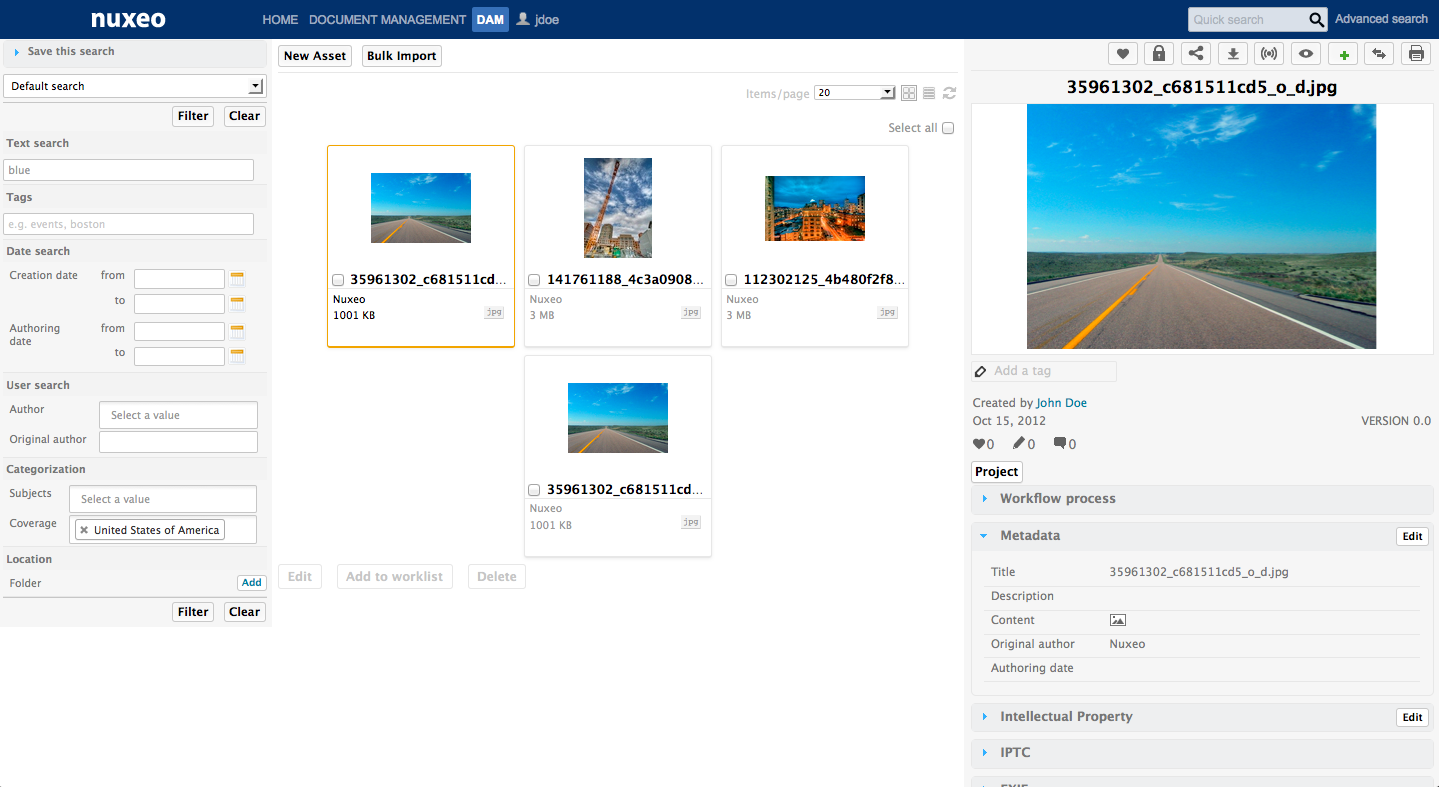

Now, you hesitate between choosing a picture of New York, or a picture from the UK.
- Click on the Coverage Add button again.
- In the tree, click on "Europe" > "United Kingdom of Great Britain and N. Ireland" entry to add a new geographical coverage location.
- Close the popup window.
- Click on the Filter button.
The results show pictures whose coverage is the US OR the UK:
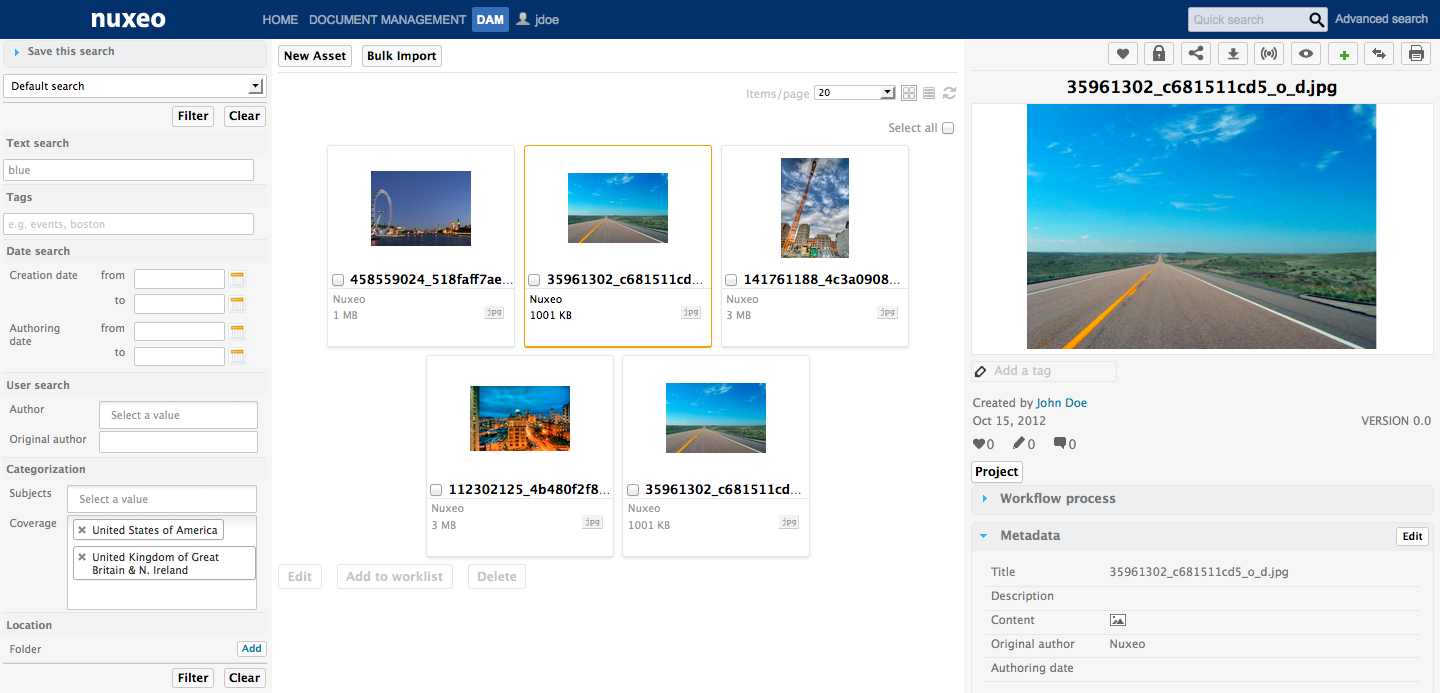

Now you want only the UK pictures:
- Click on the icon
 of the entry "United States of America".
of the entry "United States of America". - Click on the Filter button.
This criterion is removed from the search. You only see the assets that concerns the UK:
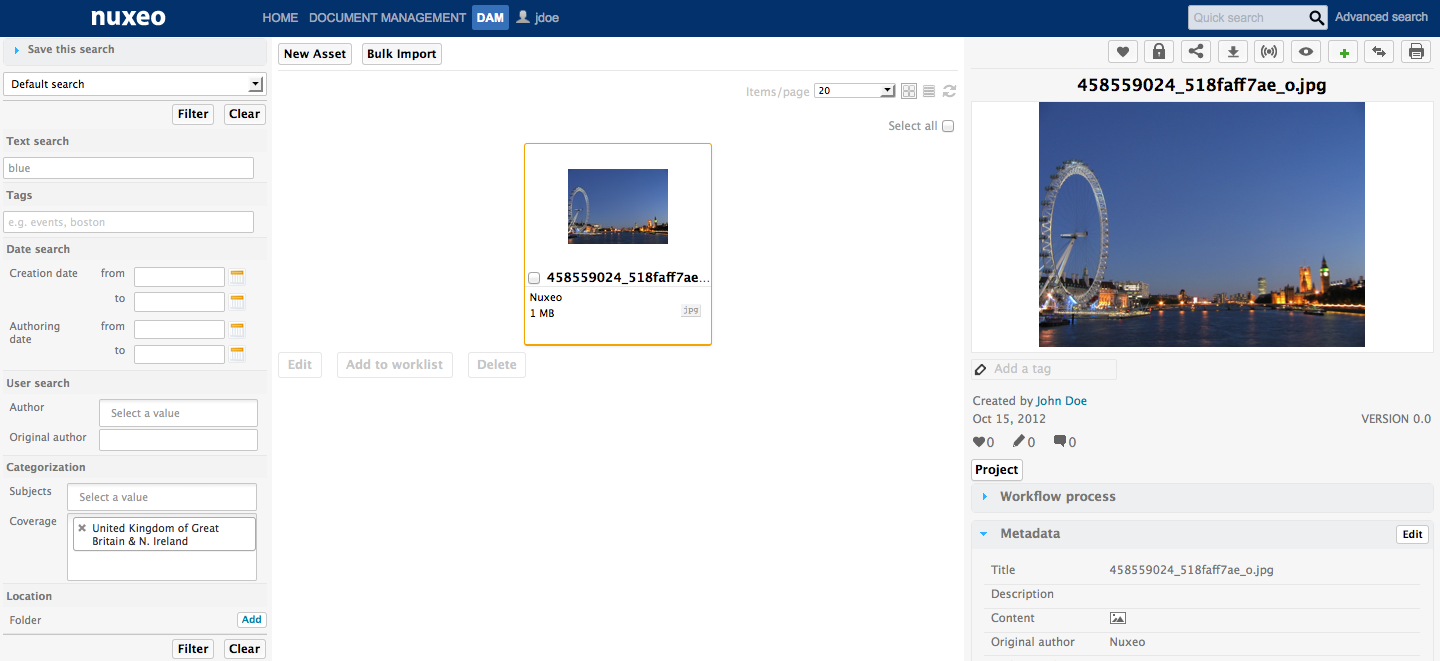

- Click on the icon
Finding Assets Using Tags
You can also refine your search using tags. For instance, you want to find urban pictures, with "blue".
- From the "blue" full text search results, start typing "urban" in the Tags field. Tags corresponding to what you are typing are suggested below the text field.
Click on the "urban" tag in the list. The tag is selected and displayed below the text field.
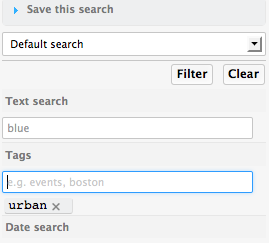
- Click on the Filter button.
The list of assets with the word "blue" and with the tag "urban" is displayed.
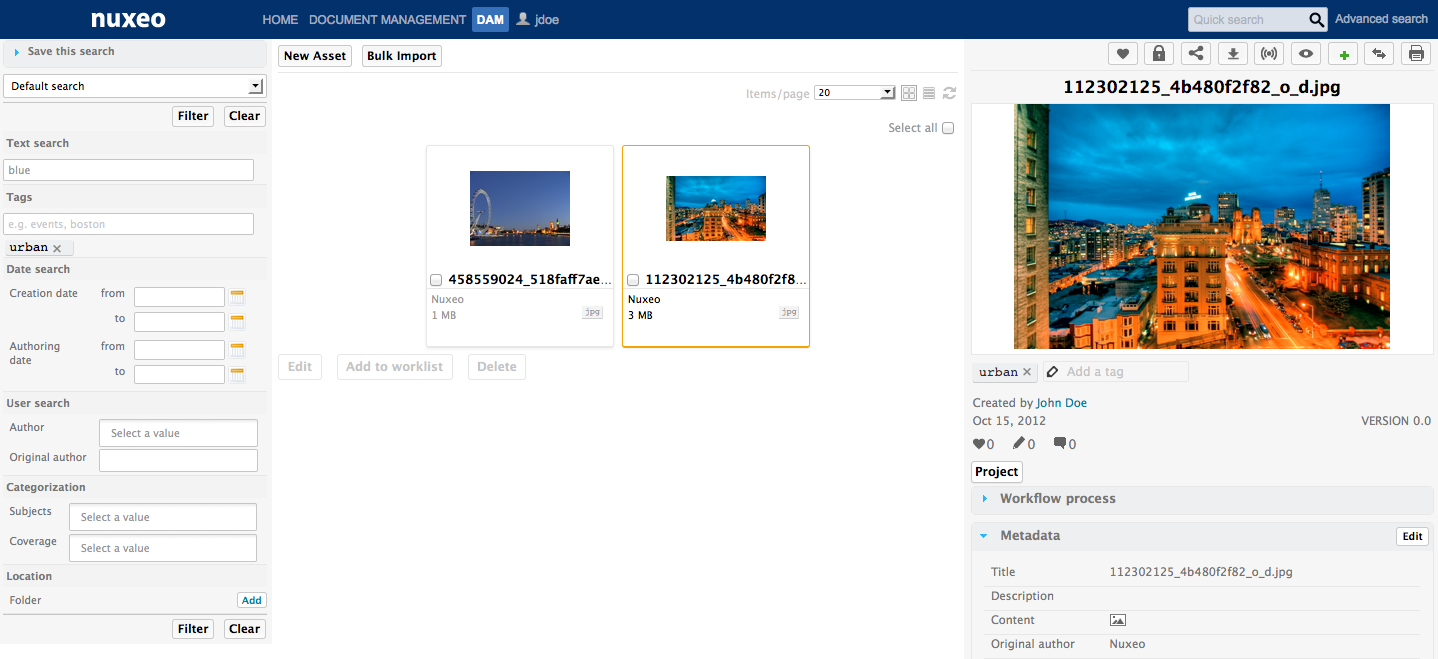

- Now, let's say that you also want pictures that show the nature. Start typing "nature" in the Tags field. Tags corresponding to what you are typing are suggested below the text field.
Click on the "nature" tag in the list. The tag is selected and displayed below the text field.
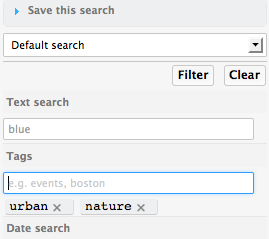
- Click on the Filter button.
The list of asset with the word "blue" and that hold either the tag "urban" or "nature" are displayed.


Saving a Search
If you regularly do the same search, you should save this search for future reuse.
When you save a search, you save the criteria of the search. This means that the results displayed when you reuse the search may be different from the results at the time you saved the search, as the content of the application may (and probably will) have changed.
You can save as many searches you need. Saved searches are available in the drop down list below the "Save this search" box. To load a search, just click on it in the list. It is automatically executed.
To save a search:
- Once you are satisfied with your search, click on the Save this search title on top of the filters. Give the Search a title.
- Click on Save. Your search is saved. It is now available in the drop down list so you can run it in one click. It is also available in the Saved searches tab of your Home, in the DAM searches tab. You can edit it from there. Editing a DAM search works like editing a saved faceted search.
Sharing a Saved Search
Saved searches are stored in the Saved searches tab of your Home. This enables you see them as documents and to edit and share them.
Depending on the modules you use and possible customizations, there can be several tabs in the Saved searches. For instance, if you use the Document Management and Digital Asset Management modules, you will have two tabs: Faceted searches, for DM saved faceted searches, and DAM searches, for DAM saved searches.
To share a search:
- Go on the relevant Saved searches tab in your Home.
- Click on the search you want to share.
- Click on the search Manage tab and give Read access right to the users you want to be able to use the search.